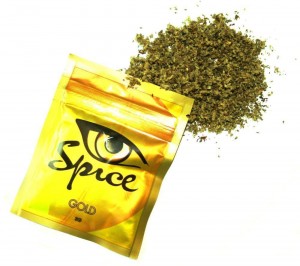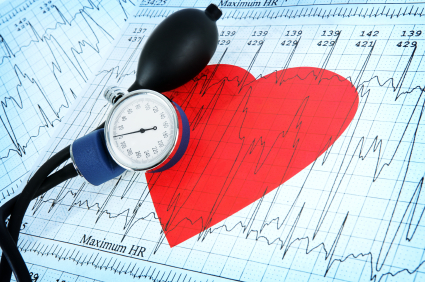Ketamine for OCD
At a recent scientific meeting, researcher Carolyn Rodriguez presented a randomized controlled crossover trial of ketamine in obsessive-compulsive disorder (OCD). In contrast to a previous negative study by Block and associates at the National Institute of Mental Health (NIMH), these investigators found that intravenous (IV) infusion of ketamine (0.5 mg/kg over 40 minutes) was associated with a larger reduction in obsessive-compulsive symptoms when compared with saline infusion. These effects were rapid in onset and persisted for approximately one week in 50% of the patients with OCD who had constant intrusive thoughts.
This dose of ketamine had previously been shown to induce rapid-onset improvement in depression and suicidal ideation in those with unipolar and bipolar depression. However, the improvement in obsessive-compulsive disorder symptoms appeared unrelated to any antidepressant effect because the individuals with OCD had minimal depressive symptoms at baseline.
The traditional pharmacological treatments for OCD are selective serotonin reuptake inhibitor (SSRI) antidepressants, which require high doses and weeks to months before the onset of full effect. In contrast, Rodriguez et al. found a 90% response rate to IV ketamine within 3 hours.
Ketamine is a blocker of the glutamate NMDA receptors, and these data suggest that targeting these receptors can induce rapid onset of positive effects in OCD. However, as is the case with the acute antidepressant response to ketamine in those with depression, the best ways to extend this therapeutic effect long-term remain to be determined.
Another blocker of NMDA receptors, the anti-Alzheimer’s drug memantine (Namenda), has been reported in open studies to show improvement in those with OCD as well. N-acetylcysteine, a substance found in health-food stores, likewise appears to re-regulate a hyper-responsive glutamatergic system in the nucleus accumbens by other mechanisms, and was also shown to have efficacy as an augmenting treatment in OCD in those who are inadequately responsive to SSRIs in a 2012 article by Afshaw et al.
Editor’s Note: Taken together, the data with ketamine, memantine, and N-acetylcysteine suggest that glutamate-based mechanisms are involved in OCD and may provide an alternative target for therapeutics in addition to serotonin.
New Findings On IV Ketamine For Treatment-Resistant Depression
We’ve written before about the rapid-onset antidepressant effects of ketamine, an anesthetic that is used in human and veterinary medicine. At lower doses, intravenous (IV) ketamine can induce antidepressant effects in both unipolar and bipolar depressed patients. When doses of 0.5mg/kg are infused over a period of 40 minutes, antidepressant effects appear within two hours but are short-lived, typically lasting only three to five days. Results have been consistent across studies at Yale University, the Icahn School of Medicine at Mount Sinai, and the National Institute of Mental Health. So far, clinical use has been limited by the short duration of the effects and the required presence of an anesthesiologist, which can be prohibitively expensive for many patients.
In a cover story in the January 2013 issue of Psychiatric Times, Arline Kaplan reviewed new findings about ketamine. The drug is a high-affinity, noncompetitive NMDA-glutamate receptor antagonist. It is not yet FDA-approved for use in depression.
According to a recent article by Murrough and Charney, response rates to ketamine are around 54% and the drug “appears to be effective at reducing the range of depressive symptoms, including sadness, anhedonia [the loss of ability to experience pleasure], low energy, impaired concentration, negative cognitions, and suicidal ideation.”
David Feifel, Director of the Neuropsychiatry and Behavioral Medicine Program at the University of California at San Diego (UCSD), instituted a program there in which patients can receive treatment with ketamine for clinical purposes (rather than for research) after signing detailed informed consent forms and being warned that the treatment is not yet approved for depression and that its effects may be temporary. The UCSD Medical Center’s Pharmacy and Therapeutics Committee, with the support of the anesthesiology department, agreed that nurses may administer the ketamine in an outpatient setting, making the procedure more affordable.
There is still the question of how to make ketamine’s effects last. Read more
Lifetime Heart Disease Risk Increases Dramatically When One or More Risk Factors Are Present in Middle Age
A meta-analysis of 18 studies that was published by Donald Lloyd-Jones in the New England Journal of Medicine in 2012 shows that increasing cardiovascular risk factors during middle age can dramatically increase a person’s risk of experiencing fatal cardiovascular disease, fatal coronary heart disease, nonfatal heart attack, or stroke later in life.
Data were analyzed from 257,384 patients, who included black and white men and women spanning a 50-year range of birth cohorts. The studies examined cardiovascular risk factors such as smoking, cholesterol levels, diabetes, and blood pressure at ages 45, 55, 65, and 75.
Having even one risk factor at age 55 dramatically increased the lifetime risk of cardiovascular disease compared to having no risk factors, and having more risk factors during middle age increased risk even further. Among people with no risk factors at age 55 (meaning cholesterol under 180mg/dL, blood pressure under 120 mm Hg systolic and 80 mm HG diastolic, nonsmoking and nondiabetic), men had 4.7% risk of death from cardiovascular disease by age 80 (compared to 29.6% for those with 2 or more risk factors). Women had a 6.4% risk of death from cardiovascular disease by age 80 (compared to 20.5% among those with 2 or more risk factors).
Lifetime risk of death from cardiovascular disease and coronary heart disease and risk of nonfatal heart attack were about twice as high in men, while risk of stroke was similar for men and women.
Across race, trends were similar, but this finding can be misleading. While African-Americans have more cardiovascular risk factors than whites, they are also more likely to die at younger ages from other causes before developing serious cardiovascular illnesses. Large studies with Latino and Asian American participants were begun too recently to provide robust data about long-term risk, but this research is expected to become available soon.
Editor’s Note: Watch your risk factors for heart disease, including high blood pressure, cholesterol, weight, and blood sugar. The more risk factors one has, the greater the increased risk of fatal cardiovascular illness.
Depression is also a risk factor for coronary artery disease, and should be treated just as aggressively and persistently as the other risk factors. Exercise is one element of a healthy lifestyle that can positively affect all of these risk factors. Implementing a healthy diet and exercise regimen by middle age will have long-term positive effects in reducing risks in older ages.
Depressive Symptoms Negate Effects of Heart-Healthy Behaviors
Physical activity and light to moderate drinking (as is often associated with the Mediterranean diet) are recommended as ways to reduce risk for heart disease and type 2 diabetes. New research shows that among healthy people, symptoms of depression can counteract the anti-inflammatory benefits of both exercise and light to moderate alcohol consumption.
C-reactive protein (CRP) is a cardiometabolic risk marker. High measures of CRP are a sign of inflammation. Leisure-time physical activity and light to moderate alcohol intake (defined as about half a drink per day for women and one drink per day for men) are associated with lower levels of CRP. Depression is associated with higher levels.
A study by Edward C. Suarez et al. published recently in the journal Brain, Behavior, and Immunity examined 222 nonsmoking men and women aged 18-65 years. These participants were physically healthy and had no history or diagnosis of psychiatric conditions. Participants recorded the amount of alcohol they consumed and the amount of physical activity in which they participated. CRP levels in their fasting blood samples were measured, and they also completed an inventory of depressive symptoms.
Those people who were physically active had lower levels of CRP, but the 4.5% of participants with depressive symptoms did not see any anti-inflammatory benefits from physical activity. Similarly, light to moderate drinking was associated with lower levels of CRP only in men who were not depressed.
Depression did not seem to affect other markers of physical health in this study, such as levels of triglycerides or cholesterol.
Editor’s Note: This study suggests that treating depressive symptoms should be a part of any plan to reduce cardiovascular risk. It seems that depression has effects that go beyond psychological distress and may prevent patients from reaping the benefits of their healthy behaviors. The effect of depression in preventing heart healthy changes in CRP could be one of many factors mediating the high levels of cardiovascular risk in depression. People with depression are twice as likely to have a heart attack than those without depression.
Cardiovascular Fitness At Age 18 Predicts Later Risk Of Depression In Men
 Research has connected cardiovascular fitness with depression risk and treatment. A Swedish study published last year in the British Journal of Psychiatry examined records of men conscripted into the military at age 18 and compared their cardiovascular fitness at the time with hospital records from later decades. Low cardiovascular fitness at the time of conscription was associated with increased risk for serious depression.
Research has connected cardiovascular fitness with depression risk and treatment. A Swedish study published last year in the British Journal of Psychiatry examined records of men conscripted into the military at age 18 and compared their cardiovascular fitness at the time with hospital records from later decades. Low cardiovascular fitness at the time of conscription was associated with increased risk for serious depression.
Editor’s Note: This study provides more evidence that exercise, which increases cardiovascular fitness and decreases many of the elements of the metabolic syndrome, is good for cardiovascular and neuropsychological health, including mood stability. It is noteworthy that exercise also increases both brain-derived neurotrophic factor or BDNF (important for neural development and long-term memory) and neurogenesis (in animals), effects shared by almost all treatments with antidepressant properties. Making exercise a routine part of a regimen aimed at medical and psychiatric health is a great idea.
Adolescent Obesity Connected to Brain Impairment
As childhood obesity has increased over the past several decades, the metabolic syndrome has also become more prevalent among children and adolescents. The metabolic syndrome consists of five measures related to obesity: elevations in fasting glucose levels or insulin resistance, a high proportion of LDL (“bad” cholesterol) to HDL (“good” cholesterol), elevated triglycerides, hypertension, and abdominal obesity or high waist circumference. A patient with three of these abnormalities would be diagnosed with the metabolic syndrome.
In adults, the metabolic syndrome has been associated with neurocognitive impairments. Researchers decided to look at adolescents with the metabolic syndrome to determine whether these brain effects are a result of long-term metabolic impairment or whether they can take place after short-term periods of poor metabolism as well. In a study published by Yau et al. in the journal Pediatrics last year, 49 adolescents with the metabolic syndrome were compared to 62 adolescents without the syndrome who had been matched for similar age, socioeconomic status, school grade, gender, and ethnicity.
The adolescents with the metabolic syndrome had lower scores on tests of math, spelling, attention, and mental flexibility, as well as a trend for lower overall intelligence. In brain measures such as hippocampal volume, amount of brain cerebrospinal fluid, and microstructural integrity in white matter tracts, the seriousness of the metabolic syndrome correlated with the level of abnormality on these measures.
Editor’s Note: It seems as though even short-term problems with metabolism can lead to brain impairments like lower cognitive performance and decreased integrity of brain structures. These effects are even seen before vascular disease and type 2 diabetes are manifest.
It is doubly important, in terms of both cardiovascular and neurobiological risks, to look out for one’s medical and psychiatric health. Reducing the abnormal components of the metabolic syndrome should produce benefits for both the cardiovascular system and the central nervous system.
Almost 40% of patients with bipolar illness in the US have the metabolic syndrome, so considerable effort will be required to improve this public health crisis.
Exercise Helps Residual Depression
Many patients with depression require two or more treatments in order to achieve remission. In a 2011 study by Trivedi et al. published in the Journal of Clinical Psychiatry, patients with major depressive disorder who had not responded adequately to selective serotonin reuptake inhibitor (SSRI) antidepressants improved when an exercise regimen was added to their regular treatment.
The patients, aged 18-70 years old, were all sedentary at the start of the trial. They were randomized to one of two exercise regimens: a high dose regimen (16 kcal/kg per week, equivalent to walking at about 4 mph for 210 minutes per week) or the low dose (4 kcal/kg per week, equivalent to walking at 3 mph for about 75 minutes per week). Both groups improved significantly by the end of the study. Remission rates (adjusted for differences between groups) were 28.3% for the high dose group and 15.5% for the low dose group.
The rates of improvement with exercise were similar or better to those commonly seen with other augmenting agents such as lithium, T3, buspirone, and atypical antipsychotics, but without side effects and other inconveniences such as blood monitoring.
Other studies have indicated that exercise by itself and in combination with other treatments has efficacy in depression. Exercise can change serotonin and norepinephrine function and can increase brain-derived neurotrophic factor (BDNF), a, and neurogenesis in the hippocampus.
The researchers looked for moderating variables that may have affected the outcomes of various participants. Men, regardless of family history of mental illness, had better remission rates in the high dose group. Women without a family history of mental illness also improved more in the high dose group, while women with a family history of mental illness improved more in the low dose group, though this finding was statistically nonsignificant.
While the researchers observed that those in the high-dose group did exercise more than those in the low-dose group, participants in the high-dose group had more difficulty sticking to their exercise regimen. It may be that even though high doses of exercise offer slightly higher rates of remission, lower doses may be more effective clinically if patients can stick to the low-dose regimen better.
Good Weight Loss With Bupropion Plus Naltrexone
 A 2013 article by Smith et al. in the journal Diabetes, Obesity, and Metabolism reports that obese patients treated with the combination of bupropion (Wellbutrin) and naltrexone (Revia) had excellent weight loss and reduction in body fat compared to those treated with either drug alone or with placebo. The combination resulted in about a 14% reduction in body fat, while placebo, bupropion alone, and naltrexone alone each brought about only a 3-4% reduction.
A 2013 article by Smith et al. in the journal Diabetes, Obesity, and Metabolism reports that obese patients treated with the combination of bupropion (Wellbutrin) and naltrexone (Revia) had excellent weight loss and reduction in body fat compared to those treated with either drug alone or with placebo. The combination resulted in about a 14% reduction in body fat, while placebo, bupropion alone, and naltrexone alone each brought about only a 3-4% reduction.
Editor’s Note: Researcher Roger McIntyre is an expert on the metabolic syndrome in patients with bipolar illness and has been using this combination with success in patients with mood disorders. He finds the combination of bupropion and naltrexone more helpful than the anticonvulsants topiramate (Topomax) or zonisamide (Zonegran) or the anti-diabetes drug metformin.
Since obesity and the metabolic syndrome occur in approximately 40 to 50% of bipolar patients and significantly increases cardiovascular risks such as heart attack and stroke, and since bupropion is widely used in the treatment of bipolar depression, this combination appears worthy of consideration for those with obesity. Its use should be accompanied by a good diet and an exercise regimen. Decreasing cardiovascular risk is a very important component of the treatment of bipolar disorder, and the combination of bupropion and naltrexone could have substantial benefits.
Adolescent Brain Particularly Susceptible to Decline in IQ from Marijuana Use
 A decades-long study in New Zealand suggests that people who use marijuana persistently during adolescence lose 8 IQ points by adulthood compared to their peers who never use marijuana. Quitting or reducing cannabis use after adolescence did not restore the intellectual abilities in those who used it persistently in their youth. This is the first study of its kind that controlled for differences in functioning that existed before adolescence.
A decades-long study in New Zealand suggests that people who use marijuana persistently during adolescence lose 8 IQ points by adulthood compared to their peers who never use marijuana. Quitting or reducing cannabis use after adolescence did not restore the intellectual abilities in those who used it persistently in their youth. This is the first study of its kind that controlled for differences in functioning that existed before adolescence.
Participants took part in neuropsychological testing at the age of 13, prior to any cannabis use, and then were periodically interviewed about their use of the drug (at the ages of 18, 21, 26, 32, and 38). At age 38 they underwent IQ testing again.
Although persistent cannabis users tended to have fewer years of education, the lack of education was not responsible for the difference in adult IQ.
Those participants who only began using cannabis persistently in adulthood did not see a decline in IQ, suggesting that the adolescent brain is particularly susceptible to damage from cannabis use.
Synthetic Marijuana Comes with Serious Risks, Including Risks to Fetus
Synthetic marijuana, otherwise known as spice, skank, or K2, is not only vastly more potent than the tetrahydrocannabinol (THC) in marijuana plants, but it also lacks cannabidiol (CBD), the calming, antipsychotic substance also present in the plants. This makes spice much more likely to induce major psychiatric effects.
New evidence links use of spice during pregnancy to a tragic birth defect, anencephaly, or absence of the cerebral cortex. It can also lead to the later development of attention-deficit hyperactivity disorder, learning disabilities, memory impairment, depression, and aggression.
of spice during pregnancy to a tragic birth defect, anencephaly, or absence of the cerebral cortex. It can also lead to the later development of attention-deficit hyperactivity disorder, learning disabilities, memory impairment, depression, and aggression.
Effects of THC on gestation may occur as early as two weeks after conception, meaning by the time a woman realizes she is pregnant, the fetus may have been harmed by exposure to the drug.
Other new finding associate use of spice with acute coronary syndrome and the kind of acute kidney injury that can lead to the organ shutting down.
Editor’s Note: It has now been found that synthetic marijuana, or spice, can lead to psychosis, delirium, acute coronary syndrome (heart attack) in young people, and now kidney dysfunction, in addition to causing birth defects if used by pregnant women. Not only is spice made up of more potent THC without the calming effects of CBD, but it is often laced with unknown contaminants, which are likely the cause of the heart and kidney damage.
Smoking regular marijuana is bad enough—it doubles the risk of psychosis and may precipitate the onset of schizophrenia. It may also cause long-lasting effects on cognitive function. Since many states are legalizing marijuana, it is important to know the risks. In any case the risks are much more serious with the synthetic product, and synthetic marijuana should be avoided at all costs.







